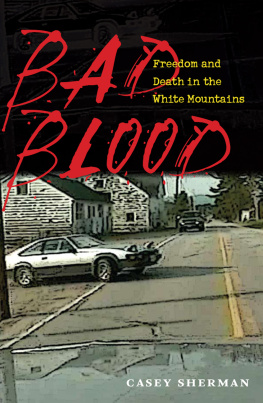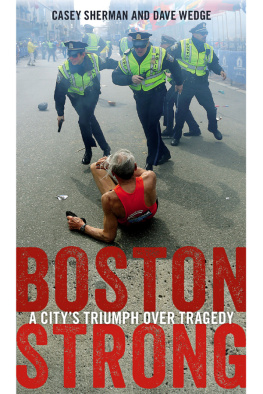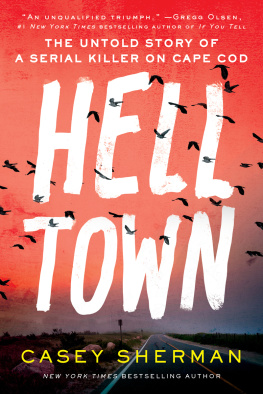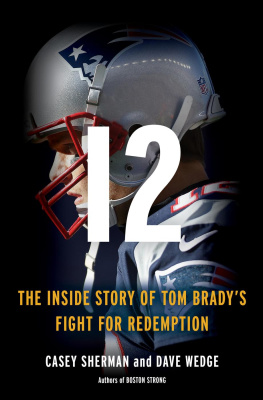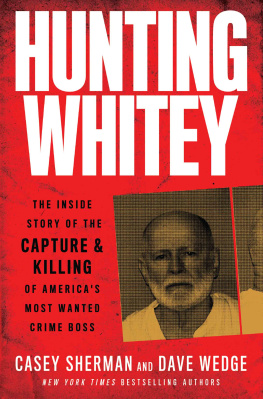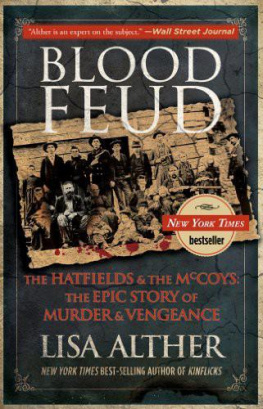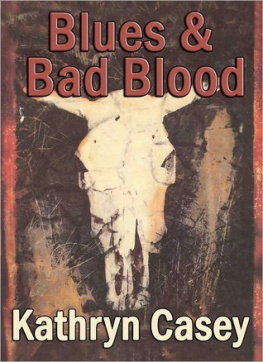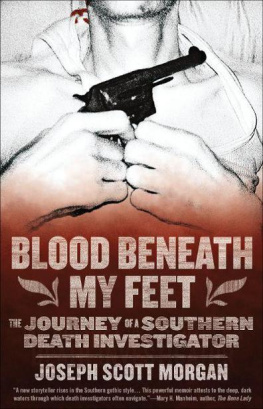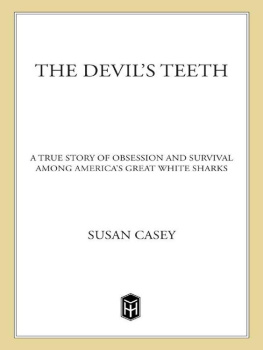Casey Sherman - Bad Blood. Freedom and Death in the White Mountains
Here you can read online Casey Sherman - Bad Blood. Freedom and Death in the White Mountains full text of the book (entire story) in english for free. Download pdf and epub, get meaning, cover and reviews about this ebook. year: 2012, publisher: University Press of New England;UPNE, genre: Detective and thriller. Description of the work, (preface) as well as reviews are available. Best literature library LitArk.com created for fans of good reading and offers a wide selection of genres:
Romance novel
Science fiction
Adventure
Detective
Science
History
Home and family
Prose
Art
Politics
Computer
Non-fiction
Religion
Business
Children
Humor
Choose a favorite category and find really read worthwhile books. Enjoy immersion in the world of imagination, feel the emotions of the characters or learn something new for yourself, make an fascinating discovery.
- Book:Bad Blood. Freedom and Death in the White Mountains
- Author:
- Publisher:University Press of New England;UPNE
- Genre:
- Year:2012
- Rating:4 / 5
- Favourites:Add to favourites
- Your mark:
- 80
- 1
- 2
- 3
- 4
- 5
Bad Blood. Freedom and Death in the White Mountains: summary, description and annotation
We offer to read an annotation, description, summary or preface (depends on what the author of the book "Bad Blood. Freedom and Death in the White Mountains" wrote himself). If you haven't found the necessary information about the book — write in the comments, we will try to find it.
The true story of a deadly feud in New Englands north country.
Bad Blood. Freedom and Death in the White Mountains — read online for free the complete book (whole text) full work
Below is the text of the book, divided by pages. System saving the place of the last page read, allows you to conveniently read the book "Bad Blood. Freedom and Death in the White Mountains" online for free, without having to search again every time where you left off. Put a bookmark, and you can go to the page where you finished reading at any time.
Font size:
Interval:
Bookmark:
in the White Mountains
 University Press of New England
University Press of New England
Hanover and London
Published by
UNIVERSITY PRESS OF NEW ENGLAND
One Court Street, Lebanon NH 03766
www.upne.com
2009 by University Press of New England
All rights reserved. No part of this book may be reproduced in any form or by any electronic or mechanical means, including storage and retrieval systems, without permission in writing from the publisher, except by a reviewer, who may quote brief passages in a review. Members of educational institutions and organizations wishing to photocopy any of the work for classroom use, or authors and publishers who would like to obtain permission for any of the material in the work, should contact Permissions, University Press of New England, One Court Street, Lebanon NH 03766.
Library of Congress Cataloging-in-Publication Data Sherman, Casey, 1969
Bad blood: freedom and death in the White Mountains / Casey Sherman.
p. cm.
Includes bibliographical references and index.
ISBN 978-1-58465-883-2 (hardcover)
1. VendettaNew HampshireFranconiaHistory.
2. ViolenceNew HampshireFranconiaHistory
20th century. 3. Kenney, Liko d. 2007. 4. McKay,
Norman Bruce, 19582007. I. Title.
HV6452.N18.S54 2009
364.1523092dc22 2009024888
September 2, 1994
It was my first day on the job and I was completely overwhelmed. I had just been promoted from production assistant to news writer for the morning news at WHDH television in Boston. I was only a year removed from college and I was faced with one of the biggest stories of the year. Just a few hours into my shift, police scanners blasted an alert that a Massachusetts State Trooper had been shot on the job on Route 3 in Kingston, thirty-six miles south of Boston near Plymouth. We didn't have a name, and we didn't know the severity of the trooper's injuries, but we did know that we had to react immediately. The executive producer sat down with the assignment editor and formulated a plan; within minutes I saw reporters running through the newsroom with photographers lugging heavy equipment close behind. They all jumped into a fleet of news vehicles and satellite vans and spread out. Some correspondents headed directly to the scene, while others fanned out to area hospitals, making sure we would be covered in case either the unnamed trooper or the shooter was brought in for treatment. As the morning wore on, we continued to gather tidbits of information as to exactly what had happened on that stretch of highway south of Boston. The trooper we found out was thirty-one-year-old Mark S. Charbonnier, an eight-year veteran of the Massachusetts State Police. Trooper Charbonnier was newly married and working on his law degree at the New England School of Law. We also learned that Charbonnier and the suspect had each been shot four times during what was supposed to be a routine traffic stop. The gunman, David Clark had been carrying two pistols, two ski masks, a screwdriver, leather gloves, and a police badge in his red Chevy van. Clark was also a convicted killer out on parole who knew he'd be sent back to prison for the curious items in his van. Clark apparently figured it would be easier to murder a state trooper than to explain the burglary tools to a judge. David Clark survived the shooting, while Mark Charbonnier did not. At trial, Anne Marie Charbonnier, the trooper's widow, called Clark an untamed animal who needed to be put down. This case was considered cut-and-dried, black-and-white. Trooper Charbonnier was a called a hero for taking the bullets that eventually would have been fired at someone else, given Clark's violent history. David Clark was sent off to Walpole State Prison, never to be heard from again. The mad dog wasn't put down, but chances are that he'll never see the outside of a prison wall. Sadly, the story repeated itself again and again over the next several years. The lead characters had all changed, but the scenarios were mostly the same. In each instance, you had a courageous police officer shot down by one of the untamed animals of the world.
The script was dramatically altered on May 11, 2007, on a quiet country road in Franconia, New Hampshire. I was working at another television station, WBZ in Boston, when the call Officer down came screaming over the police scanners on the assignment desk, a glass-enclosed pod in the middle of the newsroom. The call kicked off a flurry of activity as the assignment editor quickly calculated the drive time between Boston and Franconia, while the producer got the graphics department working on a map of the shooting scene, in case we needed to get on the air immediately and break into prime-time programming. There is a shared sense of excitement and dread working in a newsroom in full crisis mode. The instant adrenaline rush allows you to focus on covering the story, while in the back of your mind, you're thinking about the Anne Marie Charbonniers of the world, wives and children whose lives had been torn apart by one man's cold, cruel decision to pull the trigger. From the untimely death of JFK, Jr., to the unspeakable horrors of 9/11, I'd found myself on the front lines of countless breaking news stories, but on this evening, I was more spectator than active participant. My shift had long been over, and I was hanging around the WBZ newsroom catching up on some paperwork. As my colleagues had things under control and didn't appear to need my help, I began thinking about what the next few days would bring. If the speculation was correct, and the officer had died in the line of duty, there would no doubt be a massive public funeral attended by fellow police officers from across the nation. I could visualize the dramatic scene of the flag-draped coffin and the tearful remembrances. As for the gunman, there were unconfirmed reports that he too had been killed. I was a bit relieved that his death would spare the officer's family the emotional burden of a long, drawn-out criminal trial. I was also somewhat confident the killer would eventually be forgotten as just one more untamed animal in a criminal subculture full of them. I was dead wrong.
Open! I am Hiawatha!
But the Old Man of the Mountain opened not, and made no answer.
From the silent crags of sandstone, From the gloomy rock abysses.
HENRY WADSWORTH LONGFELLOW, HIAWATHA
May 3, 2003
It happened sometime late at night or early morning. Despite what must have been a deafening roar, no one had heard a sound. There were no witnesses. Many had been predicting his downfall for generations; still, his death came as a shock to all those who knew him. There was no foul play involved, the cause they said, was natural: old age. He was about ten thousand years old after all. Others would argue that we all had played a role in his demise. His remains had been discovered the next morning by two employees while out conducting a routine inspection of the park. Later that day, his immediate family, the people of Franconia, New Hampshire, gathered in the drizzle and fog to see what was left. There was nothing. The symbol of their community, their state, their way of life was lost forever.
The Old Man of the Mountain had stood sentry over Franconia Notch long before the first real man had ever set foot here deep in the Pemigewasset wilderness. The notch itself covers about six miles with Franconia Ridge on the eastern border and Cannon Mountain to the west. The ridge is comprised of Mount Lafayette (5,249 feet), Mount Lincoln (5,108 feet), Mount Liberty (5,108 feet) and Little Haystack Mountain (4,460 feet). It's an area popular with day hikers; roughly one-third of the trail is above tree line, offering up some of the most breathtaking views in New England. It can also be quite treacherous, with trouble spots like The Knife's Edge and Dead Ass Corner (the latter getting its name from a mule that fell to its death after being spooked by lightning). As dramatic a site as the Franconia Ridge is, it doesn't hold the same aura as its wayward brother to the west. At 4,100 feet, Cannon Mountain is a bit smaller, but it also had a rock formation jutting out from its southern crest that appeared to have been carved by God himself. In reality, the Old Man had been formed by glaciers into five red Conway granite ledges some twenty-five feet wide and forty feet high. With his furrowed brow, prominent nose, sullen mouth, and sharp-pointed chin, his was not a kind and comforting face. His was a New Hampshire face. The Old Man's unforgiving profile was both a welcome and a warning to those seeking freedom and adventure here in the North Country. Daniel Webster made note of this in one of his most famous oratories. Men hang out their signs indicative of their respective trades, Webster wrote. Shoe makers hang out a gigantic shoe, jewelers a Monster watch, and the dentist hangs out a gold tooth; but up in the Mountains of New Hampshire, God Almighty has hung out a sign to show that there
Font size:
Interval:
Bookmark:
Similar books «Bad Blood. Freedom and Death in the White Mountains»
Look at similar books to Bad Blood. Freedom and Death in the White Mountains. We have selected literature similar in name and meaning in the hope of providing readers with more options to find new, interesting, not yet read works.
Discussion, reviews of the book Bad Blood. Freedom and Death in the White Mountains and just readers' own opinions. Leave your comments, write what you think about the work, its meaning or the main characters. Specify what exactly you liked and what you didn't like, and why you think so.

